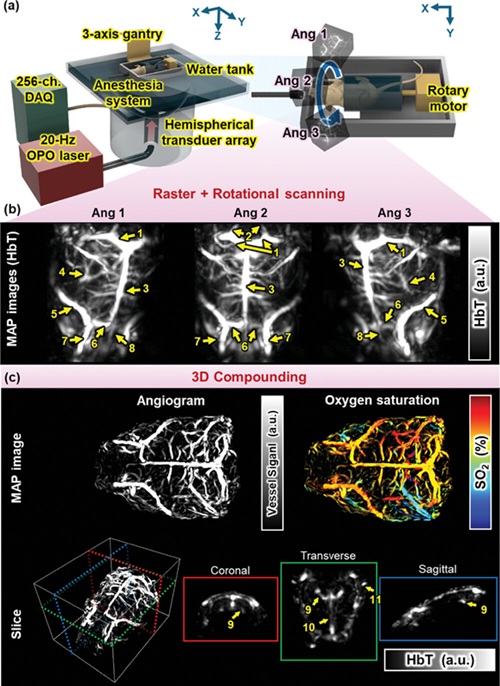Enhanced Cardiovascular MRI Predicts Heart Risk in Children with Hypertrophic Cardiomyopathy
|
By MedImaging International staff writers Posted on 06 Dec 2024 |

Hypertrophic cardiomyopathy (HCM) is the most prevalent genetic cardiovascular disorder and a leading cause of sudden cardiac death in young people, with a yearly mortality rate of 1%. However, 10% to 20% of individuals with HCM face a significantly higher risk of sudden cardiac death. Predicting this risk is challenging, as most patients, even those at high risk, show few or no symptoms. Previous studies have demonstrated that cardiovascular magnetic resonance imaging (MRI) with late gadolinium enhancement (LGE) could identify adults with HCM at an elevated risk for sudden cardiac death. LGE involves injecting gadolinium, a contrast agent, into the bloodstream, which then perfuses the heart. An initial MRI is performed as the gadolinium circulates through the heart muscle, followed by a second MRI about ten minutes later. The “late” MRI shows areas where gadolinium accumulates in damaged parts of the heart, which appear brighter on the image. The extent of this enhancement can be measured. However, this technique had not yet been tested for its ability to predict risks in younger patients.
Current risk assessment models rely on patient test results and echocardiograms, but LGE provides additional information on specific regions of the heart. A multi-institutional team, led by researchers at the Heart Institute at Children’s Hospital Los Angeles (CHLA, Los Angeles, CA, USA), examined whether adding LGE to existing models could better predict sudden cardiac death in children with HCM. To assess if LGE could predict HCM risk in children, the team conducted a 7-year retrospective cohort study involving 700 patients with hypertrophic cardiomyopathy from 37 sites globally. They found that patients with higher levels of LGE had lower left ventricular ejection fractions and larger left atrial diameters. Specifically, patients with 10% or more LGE relative to total myocardial mass had a significantly higher risk of sudden cardiac death, with an unadjusted hazard ratio of 2.19. The study, published in JAMA Cardiology, concluded that incorporating LGE into existing risk models—such as the HCM Risk-Kids and PRIMaCY score—enhanced their predictive accuracy.
“The larger amount of late gadolinium enhancement indicates larger areas of scarring, which is predictive of worse cardiac function and sudden cardiac death," said Jon Detterich, MD, Principal Investigator in the Heart Institute at CHLA. “The higher the LGE, the more predictive the score was at estimating patient risk and outcomes. This method can help us to distinguish the high-risk patients who would benefit from more immediate and intensive monitoring, therapies, and interventions—like an implantable defibrillator or surgery—from the patients at low risk of cardiac issues.”
Latest Nuclear Medicine News
- Novel PET Imaging Approach Offers Never-Before-Seen View of Neuroinflammation
- Novel Radiotracer Identifies Biomarker for Triple-Negative Breast Cancer
- Innovative PET Imaging Technique to Help Diagnose Neurodegeneration
- New Molecular Imaging Test to Improve Lung Cancer Diagnosis
- Novel PET Technique Visualizes Spinal Cord Injuries to Predict Recovery
- Next-Gen Tau Radiotracers Outperform FDA-Approved Imaging Agents in Detecting Alzheimer’s
- Breakthrough Method Detects Inflammation in Body Using PET Imaging
- Advanced Imaging Reveals Hidden Metastases in High-Risk Prostate Cancer Patients
- Combining Advanced Imaging Technologies Offers Breakthrough in Glioblastoma Treatment
- New Molecular Imaging Agent Accurately Identifies Crucial Cancer Biomarker
- New Scans Light Up Aggressive Tumors for Better Treatment
- AI Stroke Brain Scan Readings Twice as Accurate as Current Method
- AI Analysis of PET/CT Images Predicts Side Effects of Immunotherapy in Lung Cancer
- New Imaging Agent to Drive Step-Change for Brain Cancer Imaging
- Portable PET Scanner to Detect Earliest Stages of Alzheimer’s Disease
- New Immuno-PET Imaging Technique Identifies Glioblastoma Patients Who Would Benefit from Immunotherapy
Channels
Radiography
view channel
AI-Powered Imaging Technique Shows Promise in Evaluating Patients for PCI
Percutaneous coronary intervention (PCI), also known as coronary angioplasty, is a minimally invasive procedure where small metal tubes called stents are inserted into partially blocked coronary arteries... Read more
Higher Chest X-Ray Usage Catches Lung Cancer Earlier and Improves Survival
Lung cancer continues to be the leading cause of cancer-related deaths worldwide. While advanced technologies like CT scanners play a crucial role in detecting lung cancer, more accessible and affordable... Read moreUltrasound
view channel
Tiny Magnetic Robot Takes 3D Scans from Deep Within Body
Colorectal cancer ranks as one of the leading causes of cancer-related mortality worldwide. However, when detected early, it is highly treatable. Now, a new minimally invasive technique could significantly... Read more
High Resolution Ultrasound Speeds Up Prostate Cancer Diagnosis
Each year, approximately one million prostate cancer biopsies are conducted across Europe, with similar numbers in the USA and around 100,000 in Canada. Most of these biopsies are performed using MRI images... Read more
World's First Wireless, Handheld, Whole-Body Ultrasound with Single PZT Transducer Makes Imaging More Accessible
Ultrasound devices play a vital role in the medical field, routinely used to examine the body's internal tissues and structures. While advancements have steadily improved ultrasound image quality and processing... Read moreNuclear Medicine
view channel
Novel PET Imaging Approach Offers Never-Before-Seen View of Neuroinflammation
COX-2, an enzyme that plays a key role in brain inflammation, can be significantly upregulated by inflammatory stimuli and neuroexcitation. Researchers suggest that COX-2 density in the brain could serve... Read more
Novel Radiotracer Identifies Biomarker for Triple-Negative Breast Cancer
Triple-negative breast cancer (TNBC), which represents 15-20% of all breast cancer cases, is one of the most aggressive subtypes, with a five-year survival rate of about 40%. Due to its significant heterogeneity... Read moreGeneral/Advanced Imaging
view channel
AI Model Significantly Enhances Low-Dose CT Capabilities
Lung cancer remains one of the most challenging diseases, making early diagnosis vital for effective treatment. Fortunately, advancements in artificial intelligence (AI) are revolutionizing lung cancer... Read more
Ultra-Low Dose CT Aids Pneumonia Diagnosis in Immunocompromised Patients
Lung infections can be life-threatening for patients with weakened immune systems, making timely diagnosis crucial. While CT scans are considered the gold standard for detecting pneumonia, repeated scans... Read moreImaging IT
view channel
New Google Cloud Medical Imaging Suite Makes Imaging Healthcare Data More Accessible
Medical imaging is a critical tool used to diagnose patients, and there are billions of medical images scanned globally each year. Imaging data accounts for about 90% of all healthcare data1 and, until... Read more
Global AI in Medical Diagnostics Market to Be Driven by Demand for Image Recognition in Radiology
The global artificial intelligence (AI) in medical diagnostics market is expanding with early disease detection being one of its key applications and image recognition becoming a compelling consumer proposition... Read moreIndustry News
view channel
GE HealthCare and NVIDIA Collaboration to Reimagine Diagnostic Imaging
GE HealthCare (Chicago, IL, USA) has entered into a collaboration with NVIDIA (Santa Clara, CA, USA), expanding the existing relationship between the two companies to focus on pioneering innovation in... Read more
Patient-Specific 3D-Printed Phantoms Transform CT Imaging
New research has highlighted how anatomically precise, patient-specific 3D-printed phantoms are proving to be scalable, cost-effective, and efficient tools in the development of new CT scan algorithms... Read more
Siemens and Sectra Collaborate on Enhancing Radiology Workflows
Siemens Healthineers (Forchheim, Germany) and Sectra (Linköping, Sweden) have entered into a collaboration aimed at enhancing radiologists' diagnostic capabilities and, in turn, improving patient care... Read more



















